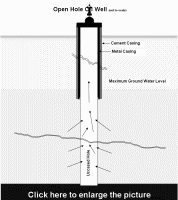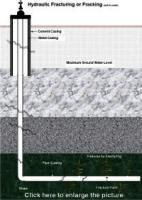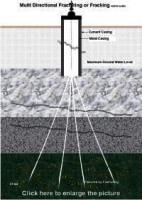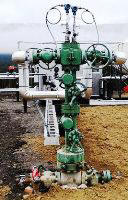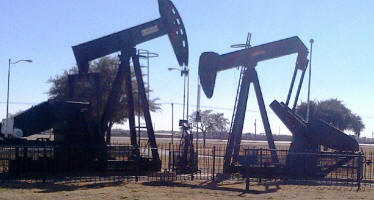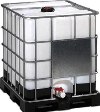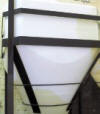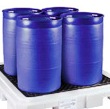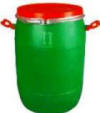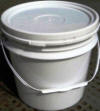 | Annie and Ana Group Tel: +912223726950 Dahej Bharuch & Mumbai, India and Houston & Midland, Texas, USA Email: info@anniechemie.com |
Oil Well Drilling Shale Gas Hydraulic Fracturing Technology & Chemicals
Chemicals used for tackling problems in Oil Gas Hydraulic Fracturing Stimulation and Production.
Oil Well Shale Gas Hydraulic Fracturing, Fracking, Drilling Chemicals, Ammonium Persulfate, Encapsulated Gel Breaker, THPS Tetrakis Hydroxymethyl Phosphonium Sulfate, HEDP Phosphonate or Hydroxyethylidene Diphosphonic Acid, KCl Substitute, Clay Stabilizer, Sodium Acetate, Citric Acid, Hydrogen Sulfide Scavenger, Scale Inhibitor, Choline Chloride, Biocide etc are used in Midland & Houston Texas, Williston North Dakota, Mansfield Pennsylvania, Zanesville Ohio and other oil fields in USA.
Most products offered from our Midland & Houston, TX area and Oklahoma warehouse
Acetic Acid Dilute:
Ammonium Persulfate: Gel Breaker Ammonium persulphate (NH4)2S2O8 is a strong oxidizing agent.
Acetic Acid Solution:
ATMP Phosphonate:
Ammonium Bifluoride:
BHMT or BHMTPMPA:
Barium Sulfate Remover:
Choline Chloride: It reduces clay swelling. It function through ion exchange, where the clay stabilizer provides a cation to replace the native, solubilized clay cation such as sodium.
Citric Acid: is offered as crystals and solution. The solution is used in hydraulic fracturing for iron control and as acidulant. We offer Tankers Totes and carboys of Citric Acid Liquid Solution for oil & gas well operations.
Crosslinking Agent Boron based: Boron crosslinker is used for reversible gel thickening function. We offer cross linker with >4% Boron.
Crosslinking Agent Zirconium based: We offer Zirconium based crosslinker in liquid, powder and granular for.
Clay Stabilizer: is used at much lower levels (0.3–1% vs 2% for KCl, depending upon the mineralogy of the formation). This is particularly useful for offshore uses, reducing the amount of clay stabilizer to be shipped.
Didecyl Dimethyl Ammonium Chloride:
DETA or DTPMP Phosphonate:
Didecyl Dimethyl Ammonium Chloride:
Flow Diverting Agent Low & High Temperature: It is used to divert frac fluids to the right places.
Friction Reducer:
Gel Breaker Encapsulated: This is a temperature dependent releasing oxidizer, used in oil well fracking. It is offered as low temperature grade and high temperature grade.
Glycerin Solution:
HEDP Phosphonate or Hydroxyethylidene Diphosphonic Acid: Hydroxy Ethylidene Diphosphonic Acid or 1-Hydroxyethylidene-1,1-Diphosphonic Acid or HEDP Phosphonate is an organophosphoric acid scale inhibitor. It can chelate with Ca, Sr, and Ba ions to form stable chelating compounds.
Hydroxy Ethylidene,1-Diphosphonic Acid Potassium salt, HEDP-Kx:
Hydrogen Sulfide Scavenger: Hydrogen Sulfide (H2S) is a poisonous gas that is deadly at high concentrations and poses serious health threats at moderate concentrations. Hydrogen Sulfide Scavenger helps in mitigating this problem.
KCl Substitute: KCl Substitute (Potassium Chloride Substitute) works as a temporary Clay Stabilizer by inhibiting clay swellings and mitigation. It performance is guaranteed by exemplary results in Capillary Suction Tests and Roller Oven Testing.
Tetrakis Hydroxymethyl Phosphonium Sulfate THPS: Eliminates bacteria in the water that produces corrosive by-products.
Scale Inhibitor: It works in controlling Barium, Strontium, Iron, Calcium & Magnesium Scales, and its effectiveness in not sacrificed in the presence of Iron.
Sodium Acetate: It is used in buffer hydraulic fracturing.
Sodium Glutaraldehyde Bisulfite Bisulphite:
Zinc Chloride: It is used for H2S control and other thing.
Biocide: We arrange supplies of Biocides for fracturing
We offer tailor made and custom made formulation products as per users needs.
FInOrIC is the internationally preferred source for Stimulation Chemicals and Hydraulic Fracturing Chemicals. In USA. we serve various oil and gas producing areas like Permian Basin, Williston Basin, Utica Shale, Austin Chalk, Eagleford Shale, Barnett Shale, Marcellus Shale. We are never too far from your well-site with multiple 24/7 company owned warehouses in the US and across the world. With customers in 55 countries across 5 continents, we source and sell almost all the fracturing chemicals. Backed by owned full fledged chemical manufacturing facilities in Midland and Houston Texas and associates and Toll Manufacturing facilities at several locations we are a truly multi-national chemical manufacturer and distributor.
Ammonium Persulfate:
Acetic Acid Solution:
ATMP Phosphonate:
Ammonium Bifluoride:
BHMT or BHMTPMPA:
Barium Sulfate Remover:
Calcium Chloride:
Cement Defoamer:
Citric Acid:
Choline Chloride:
Crosslinking Agent Boron based:
Crosslinking Agent Zirconium based:
Clay Stabilizer:
DETA or DTPMP Phosphonate:
Didecyl Dimethyl Ammonium Chloride:
Flow Diverting Agent Low & High Temperature:
Friction Reducer:
Gel Breaker Encapsulated:
Glutaraldehyde Solution:
Glycerin Solution:
HEDP Phosphonate or Hydroxyethylidene Diphosphonic Acid:
Hydroxy Ethylidene,1-Diphosphonic Acid Potassium salt, HEDP-Kx:
Hydrogen Sulfide Scavenger:
KCl Substitute:
Potassium Chloride:
Tetrakis Hydroxymethyl Phosphonium Sulfate THPS:
Scale Inhibitor:
Sodium Acetate:
Sodium Glutaraldehyde Bisulfite Bisulphite:
Zinc Chloride:
Biocide:
Annie and Ana Group
Dahej Bharuch & Mumbai, India and Houston & Midland, Texas, USA
Tel: +912223726950
Email: info@anniechemie.com
